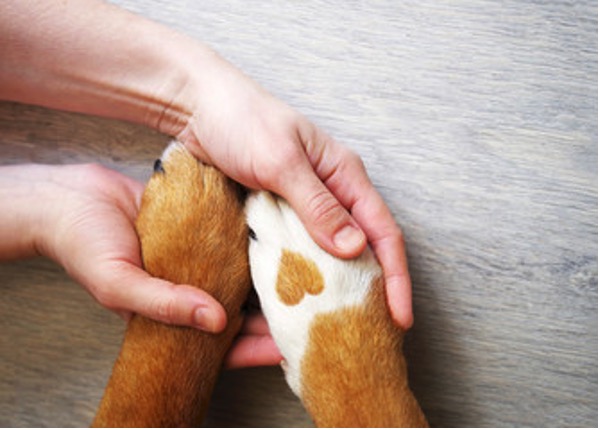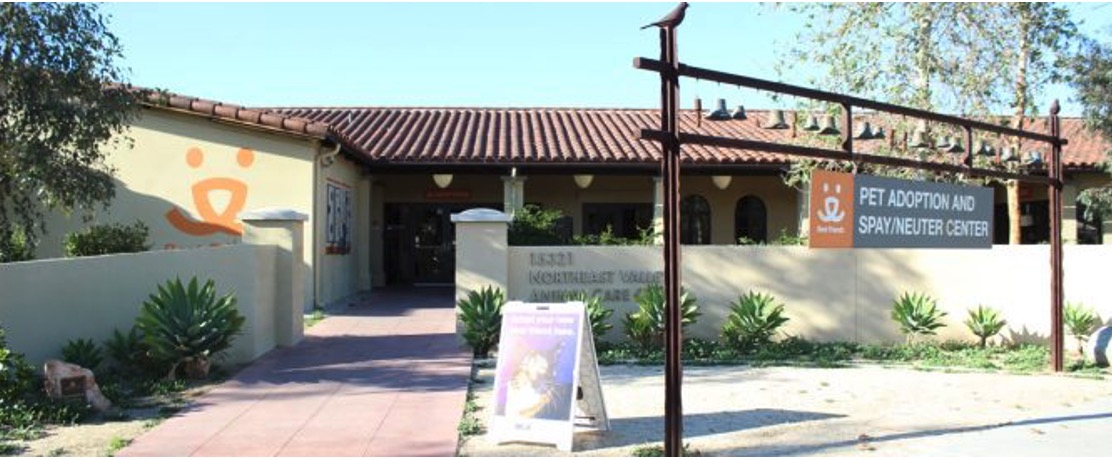Comments
ANIMAL WATCH - The Los Angeles City Council approved a temporary moratorium on dog-breeding permits on Tuesday as part of an effort to address overpopulation at the six City-run animal shelters and to study whether animals are suffering as a result of “poor policy and budgeting decisions.”
Councilwoman Eunisses Hernandez introduced the motion, stating that the action was necessary to address the crises at City animal shelters. She added that the city “cannot allow” animals to suffer as a result of “poor policy and budgeting decisions.”
Council members approved an ordinance to enact the moratorium by a vote of 13-0.
Councilwoman Traci Park also added, “Hopefully, it will help alleviate some of the burnout among our shelter staff and some of the suffering experienced by animals in our community.”
The Los Angeles City Council appeared shocked that L.A.’s municipal animal shelters are overcrowded with dogs, at least double the number that can be safely housed in each of its six shelters.
However, they must realize that not all animals are adoptable and that the term “No Kill” has also been exposed as a self-serving, donation-based excuse for continuing their suffering.
It is hoped that Councilmembers and their staff will physically visit more than one of the shelters unannounced to judge for themselves whether just throwing more money at this ongoing problem will lead to a positive solution for the animals and the shelter workers, who are also innocent victims.
THE FACADE OF HUMANENESS IN THE FACE OF OBVIOUS MISERY

When you have only a limited space and do not euthanize the animals that are suffering physically and/or emotionally and will not, should not, be adopted because they have exhibited illness or are suffering from old age, those automatic long-stay animals will continue to limit the available space while they suffer—waiting for that one-in-a-million home that will adopt them without return.
Euthanasia is not a punishment or a sign of failure in these cases and must be allowed. It is a painless release from months or years of physical and/or emotional suffering and should not be denied as a peaceful end of life when necessary.
ANIMALS ARE IN THE SHELTER FOR A REASON

The number of animals that are in shelters for reasons other than aggression/behavioral problems is small. Agreeably, some issues may be the result of physical mismatch (trying to keep a large dog in a small yard or with inadequate fencing to keep it from roaming.)
But, the majority of issues are real, at least for that particular owner—and possibly any other owner of that animal after a behavior pattern has formed. Still, the number of dogs that enter shelters is very low compared to the total number that are in homes for their lifetime, and often there is a valid reason which cannot be ignored when rehoming the pet. For instance, if the dog is known to rip and chew on furniture, it would need an owner that would be at home most of the time to ease its anxiety and who has a safe place that is comfortable for the dog (without furnishings) to confine it when gone.
In an overcrowded shelter, employees and volunteers who can do little to help an aggressive animal are, themselves, in danger of attack or injury.
STOPPING THE ISSUANCE OF BREEDING PERMITS—A TWO-EDGED SWORD
Councilman Bob Blumenfield stated that stopping the issuance of permits would help us reach our goal of “no kill”—seemingly not realizing that the crowding is not new but has increased since and because L.A. Mayor Eric Garcetti and LAAS Manager Brenda announced the City was “no kill” in 2021, and the public felt more assured that most, if not all, of the animals were rehomed with a forever owner.
See: No Kill - the Hayden Bill (SB 1785), The Hayden Bill, implemented in 1999, created severely overcrowded, unsafe and cruel conditions in CA animal shelters and resulted in more people hoarding animals, rather than turning them in at shelters.
A STOP-GAP MEASURE
The intent of the moratorium is a stop-gap measure, intended to be lifted once all shelters are “below 75% capacity for three consecutive months and could be automatically reinstated if shelter capacity rises above 75%,” according to Blumenfield.
However, the President of Volunteer Services to Animals, an amazing organization that for years provided volunteers to L.A. City shelters, e-mailed me and asked if there was ever a time anyone could remember when the shelters were below 75% capacity, and I certainly couldn’t think of one.
RAISING LIMITS ON DOGS PER RESIDENTIAL PROPERTY DIDN’T HELP
Perhaps Councilman Bob Blumenfield has forgotten the actions of his former colleague Councilman Paul Koretz, who played a major part in creating this tragedy. Although L.A.’s ordinance appears to only allow 3 dogs per property, the change in law introduced by Koretz (seconded by Councilman Blumenfield) in 2017 created a de facto increase in the number of dogs per property by no longer requiring a kennel permit nor proper zoning for four or more (ostensibly to get more adopted) and, thus, allowing kennels (and breeding) in zoning where it was not previously permitted.
Koretz also did breeders a favor by destroying the Lockyer-Polanco-Farr Pet Protection Act, which rigidly controlled the welfare of puppies sold by pet shops. Did CA lawmakers really believe pet lovers would not shop locally and increase backyard breeding to fill the demand?
Koretz and then-GM of L.A. Animal Services also promoted leaving lost/stray animals in the streets rather than taking them to shelters, another important factor in the horrendous conditions today.
(See: LA Animal Services' Plan for 'Finders' to Keep Lost Pets OK ...)
IF THIS IS SINCERE, IT MUST INCLUDE EMPLOYEES, VOLUNTEERS
Included in the Council’s concerns must be the employees, from managers struggling to maintain safety and assure the animals receive care; to the employees who deal hands-on with danger and tragedy daily, and it must include the volunteers who try to hide their tears but wake up sobbing in the night, feeling hopeless and helpless to make changes.
Councilwoman Hernandez identified that not enough animals are being adopted and too many are coming in—still blaming the problem on COVID-19 and added that not enough are being spayed or neutered.
The last is true; however, she carefully avoided, or is not aware, that most local private veterinarians in Los Angeles have been driven to other areas by the high taxation and unnecessary difficulties of doing business of any kind with the City. This is something the Council should also address and see if we can make L.A. more attractive to animal-related businesses.
Sadly, there is a general shortage of veterinarians nationwide and much of the reason is the vulnerability to unfair social media opinions/campaigns being able to destroy a practice that has taken years to build.
See: Suicides by Veterinarians are Rising in the 'No Kill' Era
WHY IS THE MISSION HILLS SHELTER NOT AVAILABLE FOR CITY STRAYS?

Before raising more of our taxes in the name of homeless animals, the Council needs to explain why the Mission shelter in the Northeast Valley is not being used to shelter the lost and stray animals of Los Angeles and, instead of being run as a non-profit enterprise by Best Friends Animal Society, which seemingly has maintained control and is making decisions that it not be used for the purpose paid by taxpayers—as a public animal shelter.
LA Animal Services' Mission Shelter Cannot be a “Gift of Public Funds”
Councilwoman Traci Park wisely agreed that the city needs to use "every tool" available to bring shelter population down to manageable levels.
WHY AREN’T WE TAXING BACKYARD BREEDERS?

Publication 122, Buying and Selling Dogs, Cats, and Other Nonfood Animals
Sales tax generally applies to sales of animals, birds, reptiles, and insects that do not meet the definition of “food animals,” whether they are used for working stock, breeding, pets, or other purposes. Regulation 1587, Animal Life, Feed, Drugs and Medicines.
Do pet sellers need a seller’s permit?
Generally, you must register with the California Department of Tax and Fee Administration (CDTFA) for a seller's permit if you are engaged in the business of selling dogs, cats, or other animals which are considered non-food animals in California.
There are some exceptions:
· If you sell no more than two pets or other non-food animals during a twelve-month period, you are not required to hold a seller's permit.
· Cities, counties, or other local government animal shelters or nonprofit animal welfare organizations—those that primarily prevent abuse, neglect, or exploitation of animals—are not required to collect sales tax for charges related to the adoptions of pets.
LAAS NEW GM PLANS TO USE RACO’S TO LOCATE BREEDERS
The City Council’s sudden concern over L.A. animal shelters was glaringly missing any comment by the new GM Staycee Dains, but it seems she was coming up with her own plan, which was widely shared:
“On Thu, Apr 11, 2024, before 5:00 p.m.,” the following e-mail was sent to all L.A. Animal Services staff from General Manager Staycee Dains, with full block signature:
“Hello Team,”
“On Tuesday, the City Council unanimously voted to approve a moratorium on issuing breeders permits so long as our shelters are over 75% of our capacity for three months. In an effort to make a huge impact in our City and for animals nationwide, LAAS is implementing a S/N and Anti-breeding Task Force.”
“This task force will be charged with enforcing the spay/neuter ordinance as well as cracking down on illegal breeding and animal sales (Santee Alley). I am looking for a ACO or Lieutenant who is passionate about enforcement, is proactive, self-directed, highly experienced and knowledgeable about LA Animal Services, and our ordinance to lead this task force. If an ACO is selected for this role, they will be given lead bonus pay for this role and will take you out of your current duties and schedule.”
“This is an opportunity for one of you to distinguish yourself locally and nationally by building this task force and reducing and hopefully eliminating illegal breeding and animals sales in LA. Your task force members will be made up of RACO officers that you will select and train from the ground up. [Emph. Added] They will not be going through a background like other ACOs and will not have access to fire arms. They will go through fingerprinting (livescan) to make sure they do not have a criminal history. The goal is that your team will be able to identify, investigate, enforce and assist in the prosecution of these animal abusers (illegal breeders and illegal sellers of animals).
FOLLOWING “Are you interested in trying something different? The RACO Program welcomes volunteers to become Reserve Animal Control Officers serving in the same capacity as our Animal Control Officers.”
“The program requires a commitment of 16 hours of volunteer service each month at any one of our six Animal Care Centers for 3 months prior to the first class. This commitment will provide a great opportunity to serve and observe. Prospective candidates will learn about care and handling of a variety of animals, interface with Center, Medical, and Field Staff, work with Supervisors and become familiar with day-to-day operations. For those that are already volunteering, you’ve already learned this – and much more!”
“During this three month commitment, there will be an application process. Applicants must be a minimum of 21 years of age, a high school graduate or equivalent, and must have a current driver’s license. A background check, drug and alcohol screening will be performed as a part of the process. Prospective candidates should also be prepared for a physical requirement check. RACOs must be able to lift at least 70 pounds and sometimes in excess of 70 pounds. Other physical agility requirements, such as stooping, crawling, and bending, will also be tested.”
“The training program will run for approximately 6 months with a schedule of 4 hours on both Tuesday and Thursday evenings with classroom and field training during the program. Uniforms, equipment and training will be provided by the Department (at no cost to the RACO). We do, however, require a 1 year commitment of 16 hours per month after graduating from the class. We need you!” [Above underlining added for emphasis only.]
“We are currently accepting applications from volunteers who have finished or will soon finish their required volunteer pre-service. Please complete a regular City Application located at: http://per.lacity.org/application.pdf and mail it to: RACO Program, LA Animal Services, 200 N. Spring St., Room 1805, Los Angeles, CA 90012.”
“The next class will begin after we have 15 qualified applicants. Slots are limited.”
Thanks, again, for your interest. We can’t wait to see you – in a uniform!
By Jose|November 21st, 2014|Blog, City Departments|Comments Off
https://empowerla.org/reserve-animal-control-officer-raco-program/
If you are interested and think you have what it takes to be the rutter for our enforcement of breeding and animals sales laws, please send me a letter of interest by April 30th stating how you will lead your team and how you will make a difference for LAAS and the City. https://empowerla.org/reserve-animal-control-officer-raco-program/
Thank you,
RACO information flyer (On Los Angeles City Career Website)
Are you interested in trying something different? The RACO Program welcomes volunteers to become Reserve Animal Control Officers serving in the same capacity as our Animal Control Officers.
· The program requires a commitment of 16 hours of volunteer service each month at any one of our six Animal Shelters for 3 months prior to the first class.
· Applicants must be a minimum of 21 years of age, a high school graduate or equivalent, and must have a current driver’s license.
· A background check, drug and alcohol screening will be performed as a part of the process.
· Prospective candidates should also be prepared for a physical requirement check.
· RACOs must be able to lift at least 70 pounds and sometimes in excess of 70 pounds.
Please complete a regular City Application and mail it to: RACO Program, LA Animal Services, 200 N. Spring St., Room 1805, Los Angeles, CA 90012.
(The above is. provided for information only and may be seen here.)
This is a chance to become part of the solution, for the animals.
(Phyllis M. Daugherty is a former Los Angeles City employee, an animal activist and a contributor to CityWatch.)






